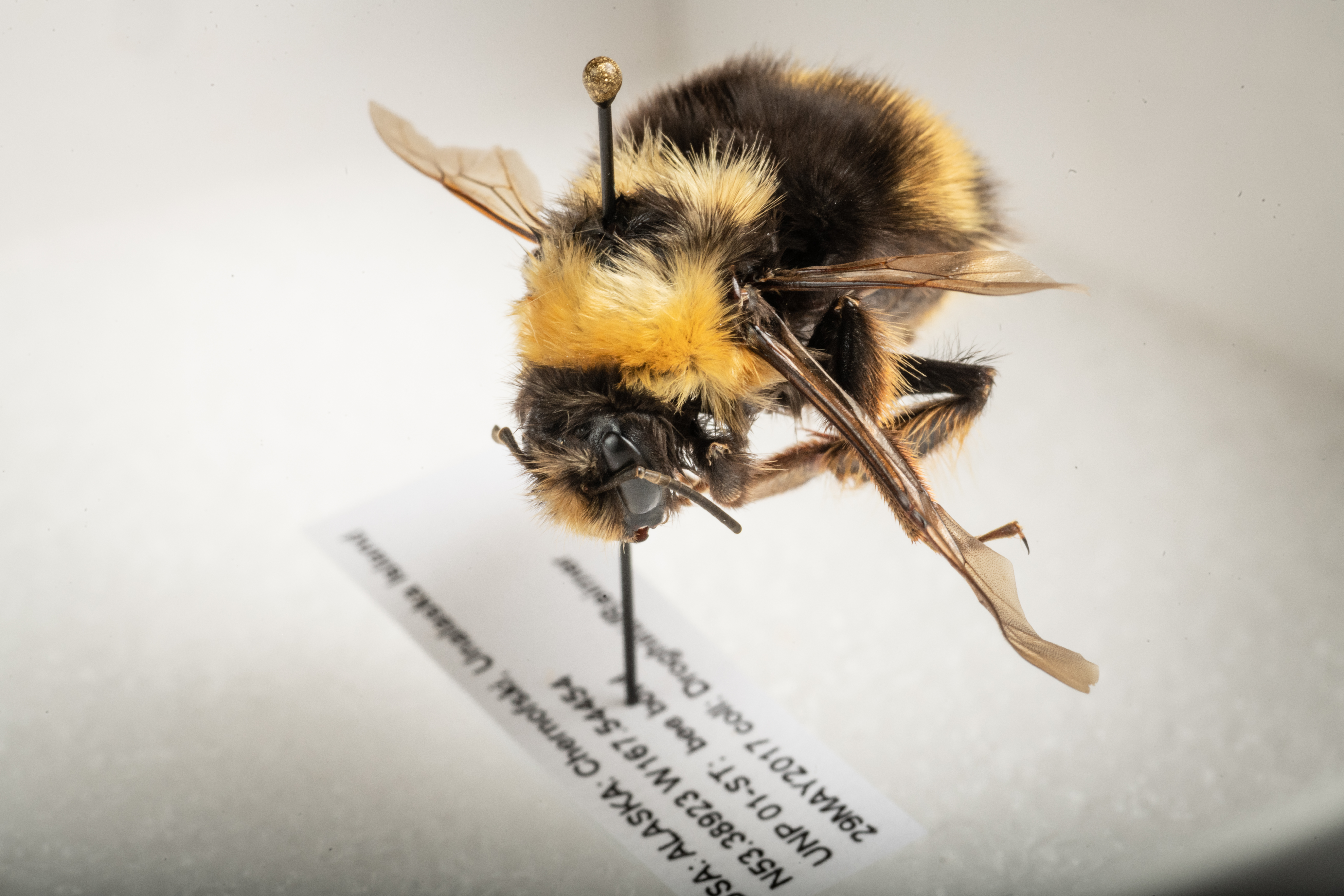The ACCS manages the University of Alaska Anchorage Entomology Collection (UAA). Our collection holds approximately 5,000 specimens that support academic and professional research in systematics and conservation in Alaska. The UAA collection has a narrow focus towards aquatic insects and pollinators. Aquatic specimens originate from rivers, lakes, and streams from across Alaska. The insect pollinators in the collection largely originate from the Alaska Bee Atlas. We also work closely with the University of Alaska Museum Insect Collection, the state repository for insect collections and research.
The UAA Entomology Collection database is available online through Arctos and can be accessed using the button below. Loans of UAA Entomology Collection specimens for legitimate research purposes are encouraged. Please read the Visiting and Loan Policy and contact the Collections Manger with your request.
To search for records that are part of the UAA Entomology Collection, type “UAA:Ento” in the Identifier Collection box.
Facilities
The University of Alaska Anchorage Entomology Collection is located next to the main offices of Alaska Center for Conservation Science on the UAA campus in Beatrice MacDonald Hall, Room 115 (view map).



Visiting and Loan Policy
We welcome visits to the UAA Entomology Collection to conduct research and/or hand-carry specimens to be borrowed. We are open by appointment Monday-Friday 9am to 4:30pm. Please contact the Collections Manager before your visit so we can best accommodate space, tools, and/or specimens. In the summer season, staff are travelling, working on projects or are utilizing larger amounts of space than normal and visits to the collection may not be possible. Absolutely no food or drink is allowed in our facility. We do not charge fees for loans or use of the collection, however parking at UAA requires a fee but is free on Fridays.
Please sign and return (vial email or snail mail) the museum’s copy of the invoice acknowledgement upon receipt of specimens; the second copy is for the borrower’s files. Unless stated otherwise, loans are made for an initial period of 1 year from date of loan initiation. Most loans are renewable on request. Loans initiated by or for study by graduate students, must be cosigned by the major professor and are the responsibility of the major professor. Loans may not be forwarded to another individual or institution without written approval.
Specimens borrowed bearing barcode labels have been entered into the UAA database. PLEASE DO NOT lose, remove, or mix-up these barcode labels. The barcodes are intended to be permanent identifiers that forever tie the specimens to their online database records. Determination labels should be placed on each specimen and labels or markers of no importance should be removed prior to shipment.
Genitalia or other structures may be dissected if the parts are stored in a generally accepted method for the taxon in question. In all cases the genitalia must be returned with the specimens, preferably physically associated with them (e.g., genitalia vials on the pin below pinned specimens).
Slides prepared by the borrower must be clearly labeled to be associated with the remainder of the specimen. Specifically, use the barcode number to indicate “taken from UAA:Ento ##” on the slides. Slides must be returned at the same time as other specimen parts but packed to avoid slide breakage or damage to other specimens.
Specimens should be packed and shipped appropriately for their safe return. Vials, microscope slides, and other heavy objects should be packed separately from pinned material. Appropriate packing methods are described in: Knutson, L. (1976). Preparation of specimens submitted for Identification to the Systematic Entomology Laboratory, USDA. Bulletin of the ESA, 22(2), 130-130. Please do not ship specimens May through September. The borrower agrees to cover all costs involved in safely returning specimens to UAA.
Extraction of RNA or DNA from UAA Insect Collection specimens is not permitted without the written approval. Such use may only be granted if the grantee agrees to provide a spreadsheet with UAA:Ento barcodes associated with the resulting GenBank or BOLD (Barcode of Life Datasystems) identifiers and PDFs of any resulting publications. Extractions will typically be allowed for 1-2 legs per specimen only. DNA extraction that destroys the specimen entirely will not be granted.
National Park Specimens: Specimens are property of the National Park Service and are only available for review in person. Under certain circumstances, arrangements will be made to loan National Park Service material with a third party agreement with the National Park Service.
Loan Requests should be sent to the Collections Manager:
Justin Fulkerson
UAA, ACCS- BMH
3211 Providence Drive
Anchorage, Alaska 99508
